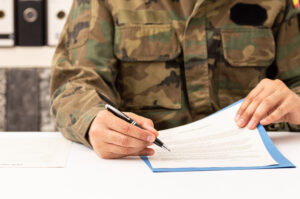Understanding the Army Hand Receipt
The army hand receipt is an essential document in military logistics. It serves as a record to ensure accountability for equipment and supplies. The process of issuing and maintaining these receipts demands precision and responsibility.
Purpose of the Army Hand Receipt
The primary function of the army hand receipt is to maintain accountability for the items issued. Each piece of equipment in the army is accounted for using these receipts. When an item is handed over, the recipient signs the receipt, acknowledging responsibility.
This process simplifies tracking and helps avoid loss or theft. The receipt includes detailed information about each item, such as description, serial number, and condition. This way, if anything goes missing, it’s easier to pinpoint when and where it happened.
Components of a Hand Receipt
A typical army hand receipt will include several key sections:
- Document Number: A unique identifier for tracking.
- Description: Details about each item, including name and type.
- NSN (National Stock Number): The stock number gives a standardized identifier.
- Quantity: How many units of each item are issued.
- Serial Number: Specific numbers for individual asset tracking.
- Condition: Current state of the item when handed over.
- Signature Block: Space where the recipient signs, indicating acceptance.
Maintaining accurate and up-to-date information on these components is crucial. It ensures a smooth auditing process and reduces discrepancies during inspections.
Issuing and Transferring Equipment
When issuing equipment, the responsible officer prepares the army hand receipt. The recipient must read the document carefully before signing. This signature signifies the transfer of responsibility. The officer also records this transaction in the unit’s records.
If equipment is transferred between personnel, a new hand receipt is issued. This procedure ensures continuous accountability. Each transfer must be diligently documented to avoid issues later. Periodic reviews help maintain accuracy in the records.
Responsibilities of Hand Receipt Holders
The holder of the hand receipt bears significant responsibility. They must ensure the equipment is well maintained and secured. Conducting regular checks and servicing is part of this duty.
If an issued item is lost or damaged, the receipt holder must report it immediately. They may face financial liability for unreported items. Thorough communication and timely action minimize complications in these situations.
Holders must also facilitate inspections when required. They prepare the necessary documents and present the equipment for review.
Common Challenges with Hand Receipts
Despite their importance, managing army hand receipts can present challenges. Frequent personnel changes make it difficult to maintain consistent records. Training and clear procedures are essential in overcoming these hurdles.
Another challenge is software and system updates, which require adjustment. Units might use different systems, leading to inconsistencies. Standardizing processes and leveraging dependable tools helps reduce these issues.
Best Practices for Managing Hand Receipts
Effective management of army hand receipts relies on best practices:
- Regular Audits: Conduct routine checks to ensure all items are accounted for.
- Training Sessions: Educate personnel on proper procedures and their importance.
- Accurate Record Keeping: Maintain precise and up-to-date records for all transactions.
- Consistent Updates: Regularly update systems and processes to reflect current standards.
- Clear Communication: Ensure all parties understand their responsibilities and procedures.
Applying these practices fosters a culture of accountability and reduces the risk of discrepancies.
Technological Advancements and Hand Receipts
Many units are adopting digital tools to manage hand receipts. These technologies streamline the process. They reduce human error and make record keeping more efficient.
Digital systems offer real-time updates and improve accessibility. With proper security measures, they ensure data integrity and protection. Integrating these solutions requires careful planning and training for all personnel involved.







